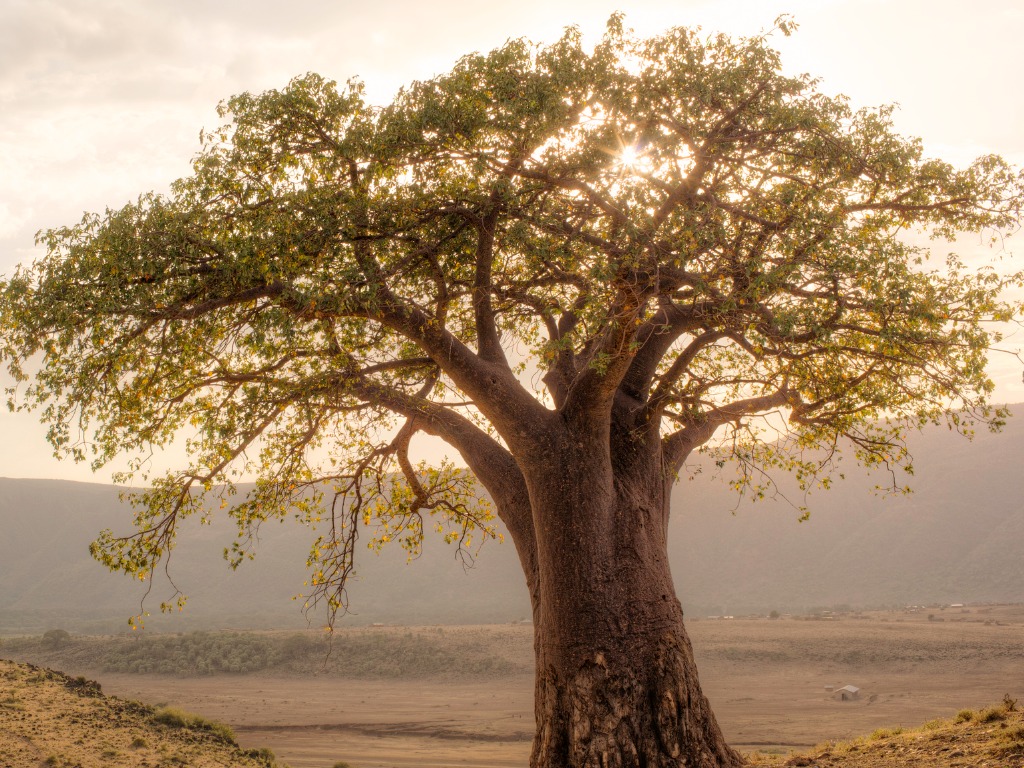African baobab
(Adansonia digitata)

Description
Adansonia digitata, the African baobab, is the most widespread tree species of the genus Adansonia, the baobabs, and is native to the African continent and the southern Arabian Peninsula (Yemen, Oman). These are long-lived pachycauls; radiocarbon dating has shown some individuals to be over 2,000 years old. They are typically found in dry, hot savannas of sub-Saharan Africa, where they dominate the landscape and reveal the presence of a watercourse from afar. They have traditionally been valued as sources of food, water, health remedies or places of shelter and are a key food source for many animals. They are steeped in legend and superstition. In recent years, many of the largest, oldest trees have died, possibly due to climate change. Common names for the baobab include monkey-bread tree, upside-down tree, and cream of tartar tree. African baobabs are trees that often grow as solitary individuals, and are large and distinctive elements of savanna or scrubland vegetation. They grow from 5-25 metres (16-82 feet) tall. The trunk is typically very broad and fluted or cylindrical, often with a buttressed, spreading base. Trunks may reach a diameter of 10-14 m (33-46 ft), and may be made up of multiple stems fused around a hollow core. The hollow core found in many tree species is the result of wood removal, such as decay of the oldest, internal part of the trunk. In baobabs, however, many of the largest and oldest of the trees have a hollow core that is the result of a fused circle of three to eight stems sprouting from roots. The bark is gray and usually smooth. The main branches can be massive. All baobabs are deciduous, losing their leaves in the dry season, and remaining leafless for about eight months of the year. Flowers are large, white and hanging. Fruits are rounded with a thick shell. The leaves are palmately compound with 5 to 7 (sometimes up to 9) leaflets in mature trees, but seedlings and regenerating shoots may have simple leaves. The transition to compound leaves comes with age and may be gradual. African baobabs produce simple leaves much longer than most other Adansonia species. Leaflets are stalkless (sessile) to short-stalked and size is variable. Flowering occurs in both the dry and the wet season. Buds are rounded with a cone-shaped tip. Flowers are showy and sometimes paired, but usually produced singly at the end of a hanging stalk about 15-90 centimetres (6-35+1⁄2 inches) in length.
Taxonomic tree:







